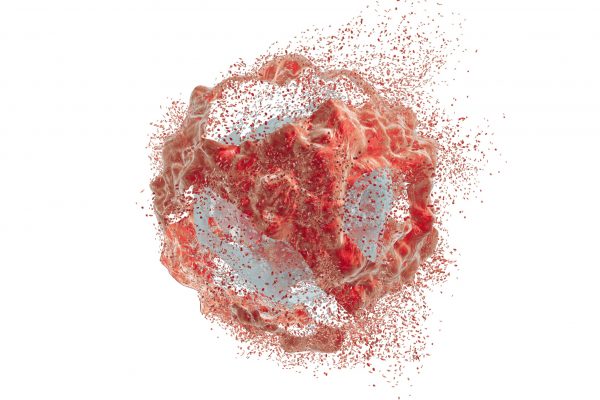
The development of autoimmune cytopenia (AIC) in chronic lymphocytic leukaemia (CLL) patients is well established, with autoimmune haemolytic anaemia (AIHA) occurring at a rate of approximately 5 to 10%, and autoimmune thrombocytopenia (ITP) at approximately 2% to 5% in this patient group. Although AIC is not specific to CLL, it is observed in both untreated and treated patients, and typically appears in patients with high risk molecular features, such as IGHV 17p/11q deletions.
Historically, CLL treatment was thought to provoke the onset of AIC. Developed in the 1990’s, this opinion was largely based on retrospective studies of highly selective, high-risk patients. Since then, treatment with fludarabine and rituximab has been associated with a low proportion of AIHA occurrences, with AIHA responding to treatment in some cases. This implies that instead of treatment, it is a lack of response to treatment that conveys a higher risk of AIC development. Until recently however, opinion has been divided, as patients with a history of, or active AIC are typically excluded from clinical trials, leaving the relationship between AIC and CLL therapy largely unknown.
Recent retrospective studies have presented conclusions that move away from the association first thought of in the 1990’s. The Mayo Clinic reported in 2018 a prevalence of treatment-emergent AIC of 6% in 193 patients treated with ibrutinib. Importantly, 67% of these AIC patients experienced an improvement in symptoms, to the point where they were able to discontinue AIC treatment. Published a year later, the French Innovative Leukaemia Organisation (FILO) reported a response rate of over 90% in 25 patients treated with ibrutinib, and 19 patients treated with idelalisib. These results imply that the presence of, or a history of AIC does not affect survival and response to treatment. Published in 2021, a retrospective study from Vitale. Et al., is the largest retrospective study to date- collecting treatment outcome data from 572 patients treated with ibrutinib, 143 patients treated with idelalisib plus rituximab, and 100 patients treated with venetoclax, with or without rituximab. In these three patient groups, the prevalence of treatment-emergent AIC was 1%, 0.9% and 7%, respectively, implying that targeted therapies are not associated with a higher risk of AIC. Of these 815 patients, 104 (13%) had a history of pre-existing AICs. Crucially, 80% of these patients, whose AIC had not resolved at the time of treatment initiation, experienced an improvement or complete resolution of AIC during therapy, implying that CLL therapy may be clinically relevant to AICs as well.
In summary, contrary to previous thought, CLL therapy does not appear to be a causative factor in the development of AIC, and instead, may be an effective management strategy for AIC. Translating these findings into clinical practice, when no treatment is needed for CLL, AIC should be treated according to existing guidelines for AIHA and ITP. Patients who do not respond should subsequently be treated with CLL therapy agents. CLL patients who require therapy, and who do not achieve a complete response and develop AIC as a result, and in patients with concomitant active CLL and AIC, a front-line “CLL-oriented treatment” approach can be considered. Such a regimen may consist of 2 to 4 weeks of corticosteroids, followed by CLL therapy, such as cyclophosphamide and rituximab, bendamustine plus rituximab, or ibrutinib.
Reference:
C Moreno., Autoimmune cytopenia and CLL ride together. Blood. 2021; 137(25): 3464-3465.